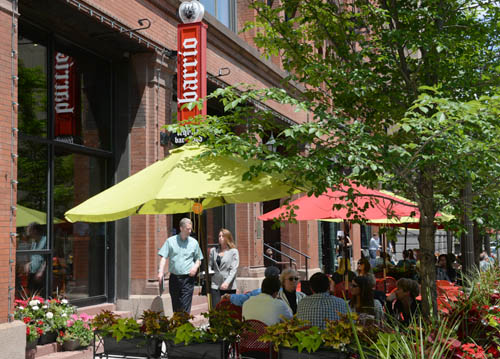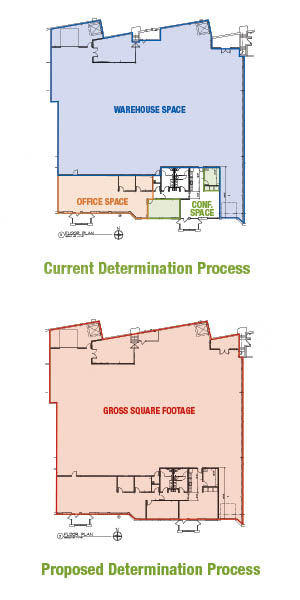The Metropolitan Council has approved changes that will simplify how the sewer availability charge (SAC) is calculated. As a result:
-
Many SAC determinations will be easier, faster and simpler.
-
Determinations on remodels will result in fewer “surprise” charges.
-
SAC credits will be simpler to obtain.
-
Restaurants will receive twice the amount of free outdoor space for patio and sidewalk seating.
 The changes go into effect on July 1, 2018. A task force comprising city and business representatives recommended the changes.
The changes go into effect on July 1, 2018. A task force comprising city and business representatives recommended the changes.
“We had a robust exchange of ideas on our customer task force and through our outreach to communities and businesses,” said Council Chair Alene Tchourumoff. “We listened, and the resulting changes to our SAC program will help businesses, communities and our own staff. This is another great example of what collaboration and partnerships can accomplish.”
“A lot of people asked a lot of hard questions and the Met Council was very transparent and upfront with all of the answers,” said Kyle Klatke, Plans Examiner for the City of Brooklyn Park and member of the SAC task force. “The Council was very open to constructive criticism, and I think that’s the reason that we got so much done and were able to make so much change.”
SAC is a one-time fee charged to a community when a property connects to the regional wastewater system for the first time, or when the use of the property changes in a way that increases potential demand on the system.
SAC rate will not increase because of the changes
 The changes are designed to be as revenue neutral as possible – both for the applicants and for the Council. During a testing period, Council staff are comparing SAC determinations using the current and new methods to ensure the final calculations result in a similar total bill for any given property.
The changes are designed to be as revenue neutral as possible – both for the applicants and for the Council. During a testing period, Council staff are comparing SAC determinations using the current and new methods to ensure the final calculations result in a similar total bill for any given property.
The SAC rate will not increase because of the changes, said Ned Smith, Director of Revenue for Metropolitan Council Environmental Services (MCES). It has remained steady at $2,485 per unit since January 2014, thanks to a strengthening economy and the Council’s financial stewardship of the wastewater system.
Job 1: Make the SAC process simpler
Currently, SAC determinations are calculated by usage or category, using net square feet on each usage type within a location (for example, bar seating differentiated from table seating, or office space from conference room from warehouse space). After July 1, calculations for uses currently based on net square feet will be based on gross square feet of the entire business footprint. This simplifies the SAC determination process for both the applicants and the Council.
In addition, the outdoor seating discount of 75% that restaurants currently receive will continue. But the new way SAC is calculated will result in twice the amount of “free” outdoor capacity for restaurants.
Importantly, businesses that remodel without changing their use will face no additional SAC collections. If a pizza parlor closes, for example, and a hamburger joint opens in the same space–even if they fit in 8 more seats—no additional SAC will be due.
“We’ve gotten great feedback from businesses and communities on these changes,” Smith said. “A couple gems we heard included ‘I did not expect such a major change’ and ‘It’s great you are working with customers to improve the process.’”
Decades-old property use is no longer a factor
The Council is also simplifying the SAC credit process. Currently, a community gets SAC credits for a property anytime SAC is paid. SAC credits are also given on properties where a business (or a business with the same use) has been operating since before 1973 (when the SAC program was established). But proving the pre-1973 use can be very burdensome.
 Under the new rules, if there is no record of a SAC determination, proof of usage prior to Jan. 1, 2009, is all that is needed to establish SAC credits.
Under the new rules, if there is no record of a SAC determination, proof of usage prior to Jan. 1, 2009, is all that is needed to establish SAC credits.
Why a sewer availability charge?
The Council’s wastewater treatment services are paid entirely by user fees – no taxes are used to support those operations. More than three-quarters of the revenue for the services comes from the municipal wastewater charge. This is a monthly charge to communities based on their volume of flow discharged into the regional wastewater collection and treatment system.
SAC is a smaller but important revenue source (15% of total revenue). It is based on the maximum potential demand for wastewater capacity from a given property.
Why potential demand? Because the wastewater system must be able to handle the flow on the busiest day of the year. For example, think of the wastewater flow from a typical weekday at USBank Stadium. It’s low enough for a small pipe. But on the day of a football game, the flow increases exponentially—so the pipes must be built large enough the handle that flow.
Ensuring generational equity in the wastewater system
“SAC is a way that we can build and rehabilitate capacity that we need in the future without making current users pay for it,” Smith explained. “We see it as a generational equity issue, where the people who are going to use the extra pipe and treatment plant capacity in the future are the ones who pay for it.
“SAC also allows us to ensure that as population and economic growth happens in the region, we have the capacity to support that growth, without digging up streets every decade to put down new, bigger pipes.”
MCES revenue for its ongoing operations and capital program has three sources:
-
Municipal wastewater charge to communities, based on their volume of flow (about 78% of revenue)
-
SAC (15%)
-
Industrial charges to treat extra-strength discharges (5%)
-
Other (2%)
More information